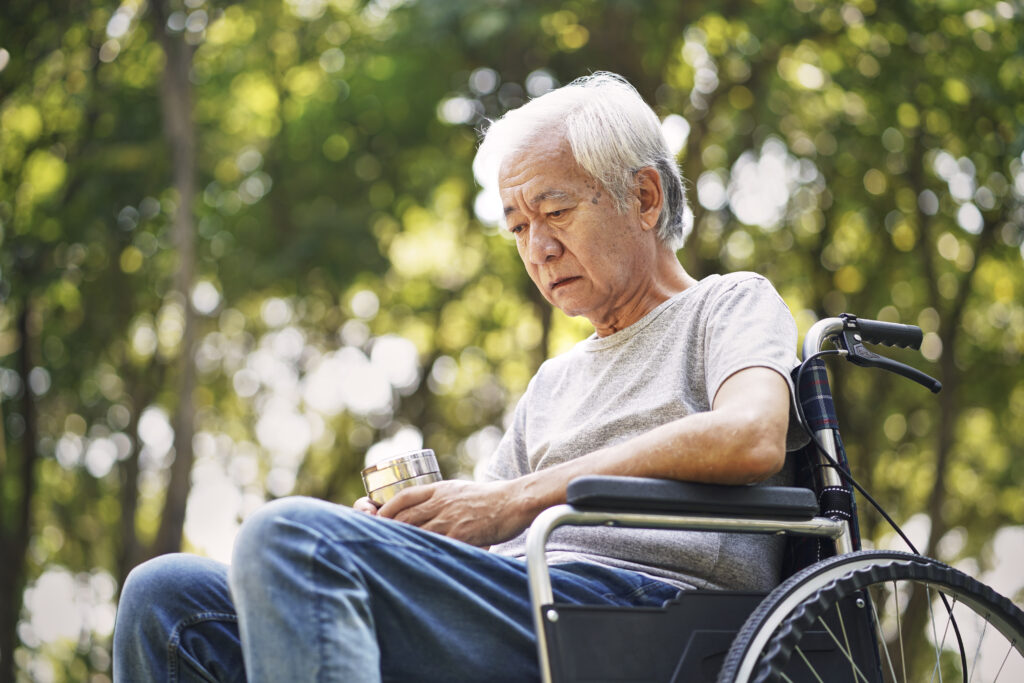
A stroke is a medical emergency that can have life-altering consequences, especially for seniors. Knowing the causes, recognizing symptoms, and understanding treatment and recovery options can make a difference in stroke outcomes and long-term health. This article provides an overview of strokes, essential prevention tips, and insights into recovery to help caregivers and loved ones better support stroke survivors.
What is a Stroke?
A stroke occurs when blood flow to a part of the brain is cut off or reduced, depriving brain cells of oxygen. Without immediate intervention, these cells can start to die, leading to brain damage and potential loss of abilities. There are three main types of stroke:
- Ischemic Stroke: The most common type, caused by a blood clot blocking an artery in the brain. This type accounts for about 87% of all strokes.
- Hemorrhagic Stroke: Occurs when a blood vessel ruptures, causing bleeding in or around the brain. Hemorrhagic strokes can be caused by high blood pressure, aneurysms, or head injuries.
- Transient Ischemic Attack (TIA): Often called a “mini-stroke,” TIA happens when blood flow to the brain is briefly interrupted. Symptoms are temporary but should be taken seriously, as a TIA often precedes a major stroke.
Recognizing the Symptoms of a Stroke: Act F.A.S.T.
Recognizing stroke symptoms quickly can save lives and improve recovery outcomes. The acronym F.A.S.T. can help you remember the most common symptoms:
- Face drooping: One side of the face may droop or feel numb. Ask the person to smile and see if their smile appears uneven.
- Arm weakness: Sudden weakness or numbness in one arm. Ask the person to raise both arms; see if one arm drifts downward.
- Speech difficulties: Slurred speech, confusion, or difficulty speaking. Ask the person to repeat a simple sentence to check for clarity.
- Time to call 911: If you notice any of these symptoms, call emergency services immediately.
Acting quickly is critical. Stroke treatments are most effective within a few hours of symptom onset, so seeking emergency help is essential.
Causes and Risk Factors of Stroke
A stroke can affect anyone, but some factors increase the risk, especially as people age. Common risk factors include:
- High blood pressure (hypertension): The leading cause of stroke, high blood pressure damages blood vessels, making them more likely to clot or rupture.
- Diabetes: High blood sugar levels can damage blood vessels over time, increasing stroke risk.
- Heart Disease and Atrial Fibrillation (AFib): These heart conditions increase the risk of blood clots that can lead to stroke.
- Smoking: Tobacco damages blood vessels, raises blood pressure, and increases clotting tendencies.
- Obesity and Inactivity: Being overweight or inactive can lead to high blood pressure, diabetes, and high cholesterol, all of which raise stroke risk.
Family history, age, and race or ethnicity also play a role, but lifestyle changes can significantly reduce many modifiable risk factors.
Prevention Tips for Reducing Stroke Risk
While some risk factors can’t be controlled, adopting a healthy lifestyle can help prevent strokes. Here are some key prevention tips:
- Monitor Blood Pressure Regularly: Keep blood pressure under control through regular checkups and, if necessary, medication. Aim for a blood pressure level of less than 120/80 mmHg, as recommended by many health experts.
- Manage Diabetes Effectively: If you or your loved one has diabetes, controlling blood sugar levels is crucial to reduce stroke risk. Regular exercise and a healthy diet are beneficial for managing diabetes.
- Eat a Heart-Healthy Diet: Choose foods rich in fiber, healthy fats, and nutrients. The Mediterranean diet, which emphasizes fruits, vegetables, whole grains, fish, and olive oil, has been linked to lower stroke risk.
- Stay Physically Active: Regular exercise supports heart and brain health by improving blood flow and reducing risk factors like high blood pressure and cholesterol.
- Quit Smoking and Limit Alcohol Consumption: Smoking increases blood pressure, and excessive alcohol intake can lead to heart disease and stroke. Limiting alcohol and quitting smoking are important steps for stroke prevention.
Stroke Recovery: What to Expect and How Caregivers Can Help
Recovery from a stroke varies depending on the type of stroke, its severity, and the individual’s health. Rehabilitation is crucial for regaining skills and improving quality of life.
- Physical Therapy: Stroke survivors may need physical therapy to regain strength, balance, and coordination. Physical therapists work on exercises to improve mobility and help rebuild muscle strength.
- Speech and Language Therapy: Many stroke survivors experience speech and language difficulties. Speech therapy can help improve communication skills and retrain the brain for effective speech.
- Occupational Therapy: Occupational therapists help stroke survivors relearn daily tasks, such as dressing, bathing, and eating, which can boost independence and confidence.
- Emotional and Psychological Support: Stroke can have a significant impact on mental health. Anxiety, depression, and mood swings are common, and counseling or support groups may be helpful.
- Medication Management: Stroke survivors often require medications to manage blood pressure, cholesterol, or other conditions to prevent future strokes. Caregivers can assist with medication routines, ensuring that survivors take medications as prescribed.
- Creating a Safe Home Environment: Stroke survivors may need home modifications to ensure safety, such as grab bars, ramps, or clear walkways. Adapting the home can support independent movement and reduce the risk of falls.
